Cuilleen House
Houses within 10km of this house
Displaying 43 houses.
Houses within 10km of Cuilleen House
Displaying 43 houses.
| House name | Description | |
|---|---|---|
| Moyvannan Castle | 16th century tower house with late 19th century extension. In the sale rental of the Domvile estate 1865 it is described as a handsome and commodious residence. In 1986 Moyvannan was restored by Don Panoz, Chairman of the Elan Corporation. |

|
| Keoghville | Built by Laurence Keogh and his wife Mary Fallon at the end of the 18th century. They were the grandparents of Judge Keogh. Described in the Ordnance Survey Name Books as still in the occupation of Keogh, the representaive of the ancient proprietors of Doohy-Keogh 'but he is poor and nearly shook'. This must be Ross Keogh who resided in Keoghville in 1837. By the time of Griffith's Valuation the house was held in fee by John McKay and valued at £15. Abandoned in the 20th century and replaced by a modern bungalow, the yard is still in use. |

|
| New Park | A Lyster home from the early 18th century, inherited by the Smyths of Barbaville through marriage. Held in fee and valued at £38 at the time of Griffith's Valuation. The home of Marcus Anthony Levinge in 1906. The house remained in Levinge hands until about the 1940s when the roof was removed. In the early 1970s the house was restored as a hotel by Paddy Kenny. |

|
| Thomastown Park | Built in the 18th century and home of the Naghten family for over 200 years, valued at £35 in the 1850s. Wilson refers to it as the seat of Mr. Naghten in 1786. In 1894 Slater mentions Thomastown park as the seat of Mrs. Naghten. It is no longer extant. | |
| Crannagh House | The main residence of the Walsh family in the 18th century. At the time of Griffith's Valuation occupied by Philip Hayes who held the house from William Potts. It is labelled Crannagh House on the 1st edition Ordnance Survey map but is not shown on the later 25-inch edition of the 1890s. | |
| Mounthussey | The home of the Hussey Walsh family, valued at £4 at the time of Griffith's Valuation. The later 25-inch map of the 1890s shows a much larger house at Moynure. A house still exists on the site. | |
| Johnstown | Built circa 1782 by Colonel John Dillon and held on a lease in perpetuity from the Incorporated Society for Promoting English Protestant Schools in Ireland. The Ordnance Survey Name Books refer to this fine residence, occupied by D. Kelly. The Dillons were in residence again by the time of Griffith's Valuation. It became the home of the Kelly family in the early 1870s until the late 1920s. Demolished by the Land Commission, only the entrance gates still remain. | |
| Mount Florence | This house originally known as the 'Whitehouse' and later as 'Mount Florence' was the home of the O'Sullivan family from the mid 18th century. In 1883 it was sold to the Greene family from the Ballinasloe area. It is now a ruin. | |
| Camma Lodge | A home of the St George family in the 19th century. A house is still occupied at the site. |

|
| Curraghboy House | Occupied by J. Byrne or Burne in the 1830s and by Thomas W. Jefferson at the time of Griffith's Valuation and still a family residence. |

|
| Hodson Bay | The home of the Hodson family on the shore of Lough Ree. At the time of Griffith's Valuation occuppied by Leonard Hodson junior and Samuel Hodson, who held from the Court of Chancery. Now greatly expanded and functions as a hotel. |

|
| Lissygreaghan | Held in fee by J. P. Gannon at the time of Griffith's Valuation when the house was valued at £4.10 shillings. | |
| Kiltoom | Crofton Kelly bought or acquired the Kiltoom property where he built a house in the mid 18th century. Occupied by Thomas H. Strevens who held a number of townlands from Sarah Kelly at the time of Griffith's Valuation and left to him at her death. Kiltoom remained a Strevans home until the 1970s, now a derelict building. |

|
| Rockhill | Occupied by John Burne in 1814 and described as a tolerably good farmhouse at the time of the first Ordnance Survey. Occupied by E. Hodson in 1837 and by Thomas Wilson who held it from James Wilson in the 1850s. Thomas Wilson was still resident in the 1870s. |

|
| Esker | Occupied by W. Kelly in 1837. Bought by the Glennon family and occupied by them for most of the 20th century, still extant. |

|
| Feacle/Fighill | The residence of Dennis Keogh in 1814, occupied by R. Keogh in 1837 and by Richard Keogh in the 1850s when the house was valued at £2. The house has been known as Fighill since at least 1837. The old house is no longer lived in. |

|
| Larkfield House | Built circa 1780, this house was the home of Joseph Sproule at the beginning of the 19th century. Bought by Edward Larkin in 1839 and sold to John Holton in 1873. A succession of owners followed until it was bought by the Naughton family in 1923. | |
| Woodberry House | In the possession of Richard Bermingham in the mid 18th century, when he sold it to Philip Parker of Erris, county Mayo and his wife, Maria Kelly. It appears to have remained in Parker ownership until purchased by the Holton family in the 1850s. Now owned by Louis Walsh. | |
| Ardkeenan | A Kelly home at the end of the 18th century which passed to the Cruise family following the marriage of Daniel John Cruise, grandson of Daniel Cruise of Cruise Lodge and Ann Kelly in 1820. Occupied by Edmond Naghten in the 1830s and by Timothy Connell at the time of Griffith's Valuation who purchased the property. | |
| Newcomen Castle | Newcomen residence in the 18th century. It is shown on the 1st edition Ordnance Survey map but only the site of the castle is recorded on the later 25-inch map of the 1890s. | |
| Ardmullan | Built post 1838 and described as a steward's house at the time of Griffith's Valuation when it was occupied by Thomas Pim junior who held it in fee. A mansion valued at £23 was still in the possession of Thomas Pim in 1906. The house no longer exists but some of the yard buildings remain. |

|
| Corkip | In 1786, Wilson refers to Cork, the seat of Mr. Tough. This appears to be an 18th century house associated with the Lyster family, later occupied by the Keoghs and now in ruins.The townland was in the possession of Arthur Beamish by the time of Griffith's Valuation and there was a herd's house valued at 15s. |

|
| Burnbrook | A house with mills closeby on the river. | |
| Ballydangan | At the time of Griffith's Valuation James Thorngate was leasing a property valued at £6 at Ballydangan, barony of Moycarn, to James Miller. There is no house marked on 1st edition OS map at this location, though a police barracks is shown nearby. The building is no longer extant. | |
| The Lodge | The Lodge on Hare island was a hunting/fishing lodge built c 1814 for William Handcock, 1st Lord Castlemaine of Moydrum to designs by Sir Richard Morrison (1767 - 1849), having a veranda supported on cast-iron pillars to the entrance front (boi). In 1837 Lewis describes it as a ‘Beautiful cottage’ belonging to Lord Castlemaine. On Hare Island he engaged in fishing, shooting and boating on Lough Ree and hosted many social events on the island during the first half of the nineteenth century. In 1906 the buildings on Hare Island were valued at £18, occupied by Lord Castlemaine who held 110 acres of untenanted land there. It is now derelict. |
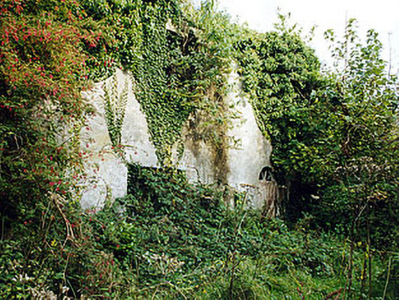
|
| Lough Ree Lodge | This lodge located on the eastern shore of Lough Ree, named on the first edition OS map, is a four-bay two-storey house, built c.1815, by a branch of the Handcock-Temple family of Waterstown House. It was the home of a Gustavus H. Temple, in 1837 and at the time of Griffith’s Valuation, when it was valued at £21. Later the home of the Daniels and Fagan families and still occupied. |
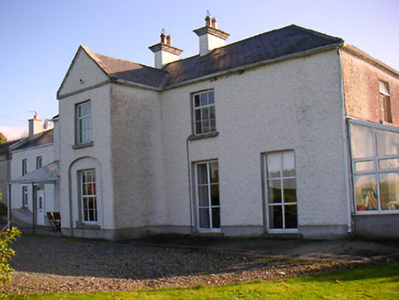
|
| St Marks | St Marks named on first edition OS map and on the 25 inch map, is now a ruin. It was the home of the Potts family, occupied by John Potts in 1814 and 1837 and by William Potts at the time of Griffith’s Valuation, when the building was valued at £16.10. O’Brien writes that in the 1860s the house came into the possession of the Magan family. The house was twice destroyed by fire . On the second occasion it was not rebuilt and the stables were converted into a residence. | |
| Killinure House | Killinure House located close to the eastern shore of Lough Ree is an early 19th century house originally constructed by a branch of the Murray Family. Occupied by Alexander Murray in 1814 and by Major General Murray in 1837. It was later the home of the Maunsell Family in the mid-to-late nineteenth-century. Members of the Brereton and Metge families were residents in the 20th century. It was later the home of the Reid family who opened it as a hotel. The Glasson Lakehouse hotel resort is located there now. |

|
| Rossana House | Rossana House is named on the first edition OS map. It was built in the early 19th century but is not mentioned in Leet (1814). However, Lewis records Captain Stubbs as the occupant in 1837. By the time of Griffith’s Valuation Elizabeth Murray (nee Rushworth), widow of Major General James P Murray of Killinure House, was resident holding the property valued at £16.5 from Anne Stubbs who held the 30 acre townland from the King-Harmans. Members of the Murray family appear to have occupied the house during the rest of the 19th century. John and Ethel Hall were resident in 1901. Sold to the Sisters and Disciples of the Divine Master in the mid-1960s and demolished circa 1990 according to the list of Protected Structure for the county. | |
| Easthill House | Detached three-bay early nineteenth-century Regency villa, built in 1803. This house was originally built by a branch of the Handcock-Temple family of nearby Waterstown House and by 1814 was the home of Richard Cuppaidge, who is also recorded in 1837 as the occupant. John Cuppaidge was resident at the time of Griffith’s Valuation. The house was the property of the Clynes, Dolan and O’Shea families in the 20th century. |
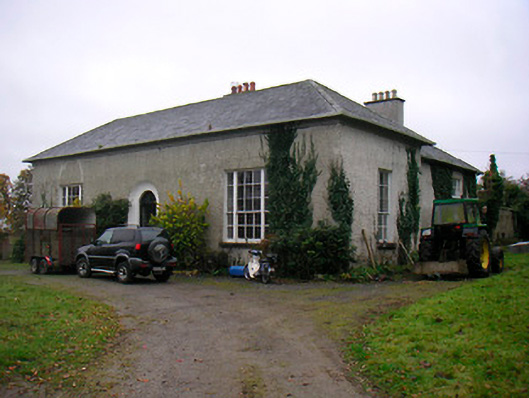
|
| Ballaghkeeran House | Ballaghkeeran House marked on the 25 inch OS map but not on the earlier first edition map. This ‘mansion’ house was erected in the 1860s according to a Murtagh sale rental of 8 December 1876 which states that the sale included “a fine residence, erected within the last ten years, regardless of expense, built on an eminence affording commanding views of lake scenery … and approached from the public road by a handsome carriage drive, with ornamental iron gates and lodge at entrance’. Mrs Murtagh was the occupant at this time holding the house and nine acres as a tenant under the Court of Chancery. Members of the Murtagh family were still living in the house in 1901 and 1911. This house appears to be the residence of a farming enterprise. | |
| Moydrum Castle | The National Built Heritage Service states that Moydrum Castle is a Gothic Revival castellated country house built circa 1812 to designs by Sir Richard Morrison (1767-1849), who was commissioned by William Handcock to rebuild an existing house befitting of his new status as Lord Castlemaine. Lewis describes it as ‘a handsome castellated mansion, erected in 1814’. It was valued at £75 in the mid-19th century. The building remained the home of the Castlemaines until it was burnt down on 3 July 1921. A photograph of the remains featured on the cover of the U2 album ‘The Unforgettable Fire'. |
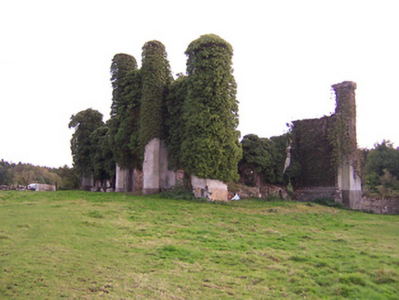
|
| Fardrum House | Fardrum House, an early 19th century house, named on the first edition OS map. Described by the National Built Heritage Service as a highly appealing early nineteenth-century gentleman’s cottage. Valued at £12 at the time of Griffith’s Valuation (publ. 1854) it was occupied by Eliza Mathews who held it from John Ennis. Later occupants have been the Robinson and Campbell families and it remains a family residence. |
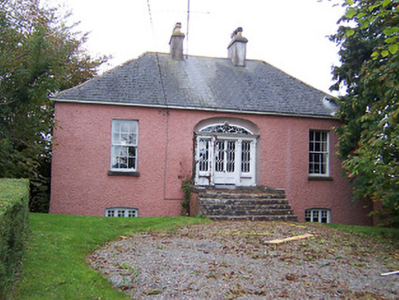
|
| Old Court | Old Court located on the northern outskirts of Athlone town was built circa 1840 (O’Brien) and incorporated an earlier house. The building on the site on the first edition OS map is named Springpark House. The Potts were settled here from the 18th century. P Cusack occupied Spring Park in 1837 and the house valued at £26 was held by William Potts in fee at the time of Griffith’s Valuation (publ. 1854). In the early 20th century the house was occupied by the Magan family and William Morgan Tilson Magan spent his childhood years here. This house was demolished in the 1980s. | |
| Newcourt | The National Built Heritage Service records a substantial mid-Victorian house which retains its character and much of its early fabric despite numerous later extensions and alterations. A four-bay two-storey house, built about 1864 by William Potts of nearby Old Court. There is a plaque of the Longwood Family over the crenellated extension. Owned by the Potts into the 20th century and by the Heaton family since the 1950s. | |
| Court Devenish | The present Court Devenish House was built at the end of the 18th century and has been extensively renovated and extended at various times. The remains of the important early 17th century Court Devenish House forms a garden feature. The original house was largely destroyed during the 1691 siege. The Devenishes descended from a Dublin merchant who leased land at Athlone from the Crown in the early 17th century. In 1751 their interest in these lands was sold to Gustavus Hamilton [of Viscount Boyne family]. At the time of Griffith’s Valuation (publ. 1854) a Mrs Dubordieu was resident holding the property from William Cooke of Talbot Hall, New Ross, Co Wexford. It was valued at £20.10. Since then the house has had many occupants and owners but is still extant. |

|
| Auburn House | Auburn House located on the eastern outskirts of Athlone town is described by O’Brien as a late 18th century, two-storey, three bay house built by James Sproule about 1790. Occupied by the Bruce family of Gore House, Northgate Street, for about fifteen years before they immigrated to Australia. W S Bruce was resident in 1837. At the time of Griffith’s Valuation (publ. 1854) Laurence or Lorenzo Dundas was resident holding the house valued at £22 from George Mechum. Various persons occupied this house in the following years including the Mahon and Browne families in the 20th century. Sold to the state in the 1960s it became a ruin and is now demolished. The Athlone Regional College now occupies the site. | |
| Mountain View Cottage | This building is named as Mount View Cottage on the first edition OS map and Mount View on the 25 inch map. O’Brien writes that Mount View on the Moate road is a two-storey, three-bay Victorian house built by a Mr Vaughan in 1866. At the time of Griffith’s Valuation (publ. 1854) the previous house on this site, valued at £10, was occupied by Mrs Diana Sproule, who held the property from Robert Jameson. The present house was a McNamara home in the 20th century and is still extant. | |
| Cloonbonny | Cloonboony is a five-bay single-storey over basement house on a U-shaped plan, built c.1790, having two two-storey returns (boi). Cloonbonny House was originally built by the Longworth family as a dower house to Glynwood House (O’Brien). Edward Marsh was resident at the time of Griffith’s Valuation (publ. 1854) when the house was valued at £11 and was held from Francis Longworth. The Johnson and Byrne families have occupied the house from 1869 until the present day. |
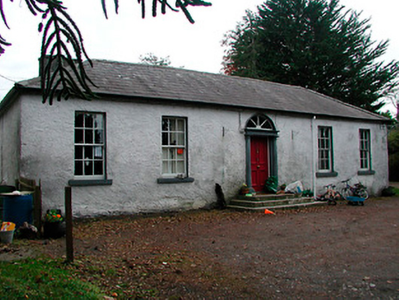
|
| Creaghduff House | A building is marked at the site of Creaghduff House on the first edition OS map but the present house appears to have been built after this date. Gearoid O’Brien refers to Charles Handcock building the house at the time of Griffith’s Valuation (https://www.westmeathindependent.ie/2023/02/03/street-wise-coosan/). Valued at £17 as recorded in Griffith’s Valuation the house was occupied by the Hon Charles Handcock and held from Lord Castlemaine. It is located at the south west corner of Coosan Lough. Donal O’Brien writes that from the end of the 19th century Creaghduff was the home of Robert Degennes Levinge, a grandson of Sir Richard Levinge 4th Bt, and his descendants, who still live there. | |
| Creggan House | Creggan House, located just south east of Athlone town and south of Creggan Castle. This house is named on the first edition OS map. It was a two-storey, three-bay house built by the Longworth family in the early 19th century. Peter Longworth was a Cromwellian soldier who settled at Creggan Castle in the mid-17th century. The Longworth family continued to inhabit Creggan House for much of the 19th century, Francis Longworth being recorded as the occupant in 1837. Henry Norwood Trye was resident at the time of Griffith’s Valuation (publ. 1854), holding the house valued at £24 from his brother-in-law Francis Longworth. It was occupied by land agent Peter Metge and his family in 1901 and by widower Thomas Davies Longworth and his daughters in 1911. The house was burnt down in 1921 when occupied by a Major Montgomery and subsequently demolished. | |
| Woodville | Hawthorn Cottage is named on the first edition OS map and on the 25 inch map as Woodville. ‘The Cottage’ was the seat of William Cooke in 1837 and at the time of Griffith’s Valuation (publ. 1854) when the building was valued at £16 and held from Lord Castlemaine. O’Brien writes that the Bourke family were in possession in the late 19th and early 20th centuries. The house was demolished post 1950. The site is now among state and industrial buildings located on the east side of Athlone. | |
| Retreat | Retreat was a two-storey, three bay late 18th century house built by Thomas Cooke and located close to the east side of Athlone town. It was occupied by General Hart in 1814, F E Moony in 1837 and by Major Owen Lloyd Ormsby at the time of Griffith’s Valuation (publ. 1854), who held the property valued at £20 from William Cooke. Later occupants of this house were the Costello, Kilduff and Young families. The house and lands were sold to the Athlone Urban District Council in 1998 and the house demolished. |

